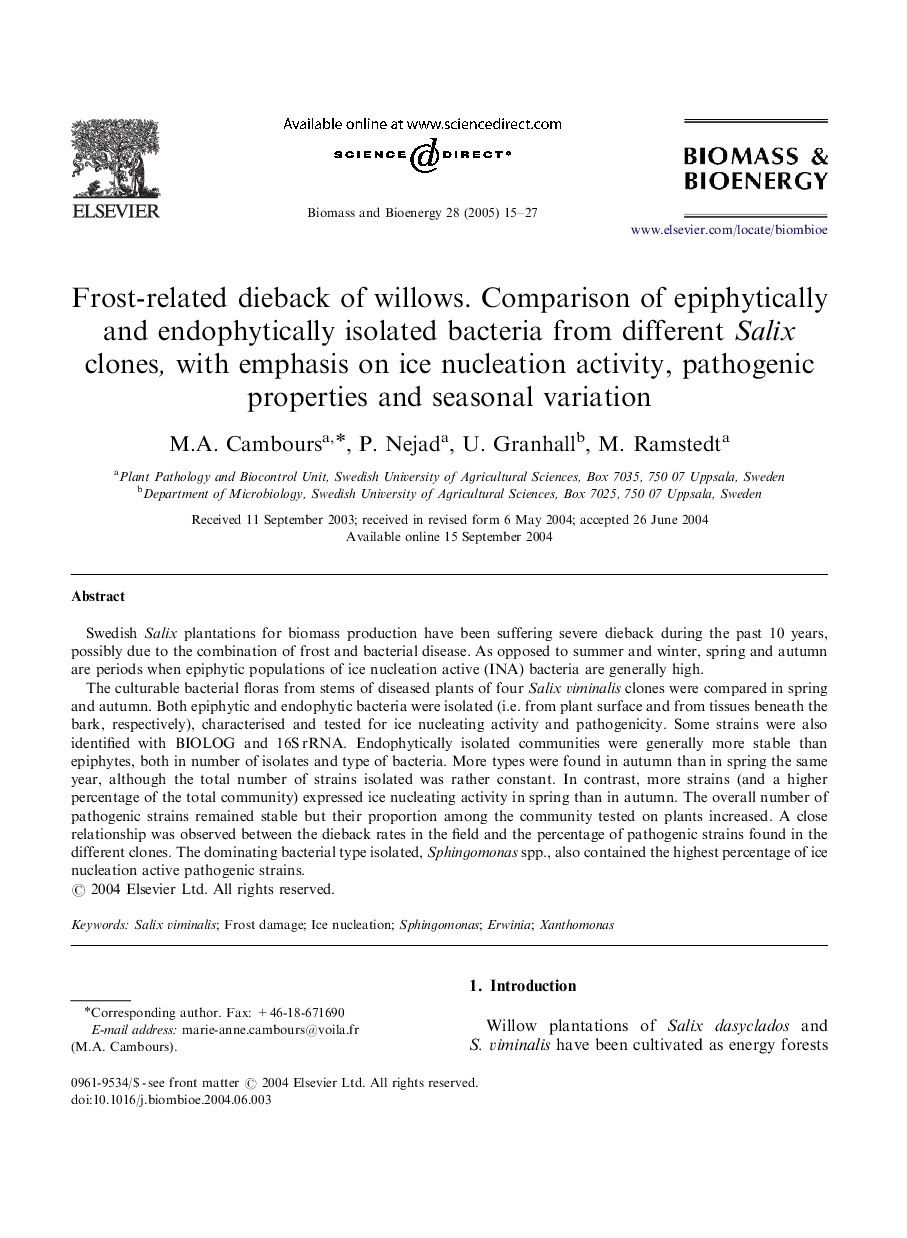| Article ID | Journal | Published Year | Pages | File Type |
|---|---|---|---|---|
| 10393894 | Biomass and Bioenergy | 2005 | 13 Pages |
Abstract
The culturable bacterial floras from stems of diseased plants of four Salix viminalis clones were compared in spring and autumn. Both epiphytic and endophytic bacteria were isolated (i.e. from plant surface and from tissues beneath the bark, respectively), characterised and tested for ice nucleating activity and pathogenicity. Some strains were also identified with BIOLOG and 16SÂ rRNA. Endophytically isolated communities were generally more stable than epiphytes, both in number of isolates and type of bacteria. More types were found in autumn than in spring the same year, although the total number of strains isolated was rather constant. In contrast, more strains (and a higher percentage of the total community) expressed ice nucleating activity in spring than in autumn. The overall number of pathogenic strains remained stable but their proportion among the community tested on plants increased. A close relationship was observed between the dieback rates in the field and the percentage of pathogenic strains found in the different clones. The dominating bacterial type isolated, Sphingomonas spp., also contained the highest percentage of ice nucleation active pathogenic strains.
Related Topics
Physical Sciences and Engineering
Chemical Engineering
Process Chemistry and Technology
Authors
M.A. Cambours, P. Nejad, U. Granhall, M. Ramstedt,
